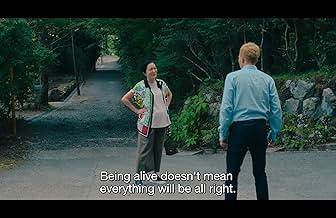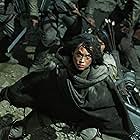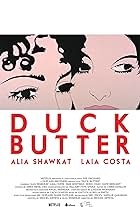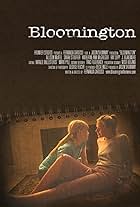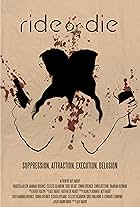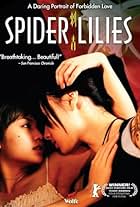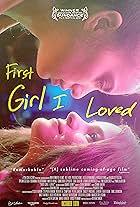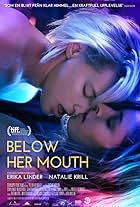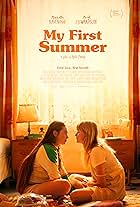IMDb RATING
5.6/10
2.7K
YOUR RATING
Rei helps the woman she's been in love with for years escape her abusive husband. While on the run, their feelings for each other catch fire.Rei helps the woman she's been in love with for years escape her abusive husband. While on the run, their feelings for each other catch fire.Rei helps the woman she's been in love with for years escape her abusive husband. While on the run, their feelings for each other catch fire.
- Awards
- 1 nomination
Artemis Snow
- Nanae
- (voice)
- Director
- Writers
- All cast & crew
- Production, box office & more at IMDbPro
Storyline
Did you know
- TriviaBased on manga series "Gunjo" by Ching Nakamura (published from 2007 to 2012 in manga magazine Monthly Ikki).
- Quotes
Rei Nagasawa: He's dead and I killed him. And I lost my virginity at 29 years old.
- Crazy creditsThe title doesn't appear until the 28 minute mark.
Featured review
First of all, the fact that a female-led LGBT movie made it to Netflix Japan is huge considering Japan has very little representation.
Lots of great qualities about this movie. The acting and cinematography is different from normal Japanese films, which often show acting that is over dramatized to force humor. This film doesn't do that. Kiko and the supporting lead actress did a great job playing complex characters that take the whole movie to fully understand.
The cinematography also showcased lower class life in rural parts of Japan, which often get overlooked in Japanese films that make it abroad.
However, I think American viewers who mostly watch American films might not understand this film, and many of those viewers will likely complain about the length. American films used to be long, too, but later became no longer than 90 minutes because Americans' attention spans are just too short these days. Current Hollywood films contain scene after scene of "in your face" drama and action, sacrificing artistic film for purely entertainment. Perhaps that works for super hero and comedy films, but Ride or Die isn't this type of film. American movies also stop short of explaining the ending of films, but this movie takes you to the very end.
Japanese art and TV are *masters* of displaying the subtleties of everyday life and the tenderness of human emotion and connection. That's exactly what's happening in the parts of this film that some Americans may consider "slow." If you have an understanding of Japanese culture and art, then this will make sense as you watch the film. There is also a strong culture of natsukashii/nostalgic-ness, especially pertaining to high school, in pop culture here in Japan, which explains the number of flashbacks to high school.
Those people who are complaining about Kiko's nudity don't understand who Kiko is. She is not the run-of-the-mill actress/model. She is very body-positive and lives to push the boundaries on what society deems acceptable.
That said, I think it's a fantastic piece of art if you're willing to try understanding the film through a non-American lens, but it's definitely not for suited for everyone.
Lots of great qualities about this movie. The acting and cinematography is different from normal Japanese films, which often show acting that is over dramatized to force humor. This film doesn't do that. Kiko and the supporting lead actress did a great job playing complex characters that take the whole movie to fully understand.
The cinematography also showcased lower class life in rural parts of Japan, which often get overlooked in Japanese films that make it abroad.
However, I think American viewers who mostly watch American films might not understand this film, and many of those viewers will likely complain about the length. American films used to be long, too, but later became no longer than 90 minutes because Americans' attention spans are just too short these days. Current Hollywood films contain scene after scene of "in your face" drama and action, sacrificing artistic film for purely entertainment. Perhaps that works for super hero and comedy films, but Ride or Die isn't this type of film. American movies also stop short of explaining the ending of films, but this movie takes you to the very end.
Japanese art and TV are *masters* of displaying the subtleties of everyday life and the tenderness of human emotion and connection. That's exactly what's happening in the parts of this film that some Americans may consider "slow." If you have an understanding of Japanese culture and art, then this will make sense as you watch the film. There is also a strong culture of natsukashii/nostalgic-ness, especially pertaining to high school, in pop culture here in Japan, which explains the number of flashbacks to high school.
Those people who are complaining about Kiko's nudity don't understand who Kiko is. She is not the run-of-the-mill actress/model. She is very body-positive and lives to push the boundaries on what society deems acceptable.
That said, I think it's a fantastic piece of art if you're willing to try understanding the film through a non-American lens, but it's definitely not for suited for everyone.
- thsalf1020
- May 24, 2021
- Permalink
- How long is Ride or Die?Powered by Alexa
Details
- Release date
- Country of origin
- Official site
- Language
- Also known as
- Kaç Yoksa Ölürsün
- Production companies
- See more company credits at IMDbPro
- Runtime2 hours 22 minutes
- Color
- Sound mix
Contribute to this page
Suggest an edit or add missing content
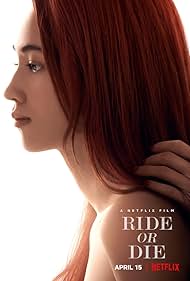
![Watch Official Trailer [eng sub]](https://m.media-amazon.com/images/M/MV5BOTg3MzFmNWQtNGQ5Ni00ZGE2LTkxNDgtZTM2NGZhYWFlMjU2XkEyXkFqcGdeQXRyYW5zY29kZS13b3JrZmxvdw@@._V1_QL75_UX500_CR0,0,500,281_.jpg)




